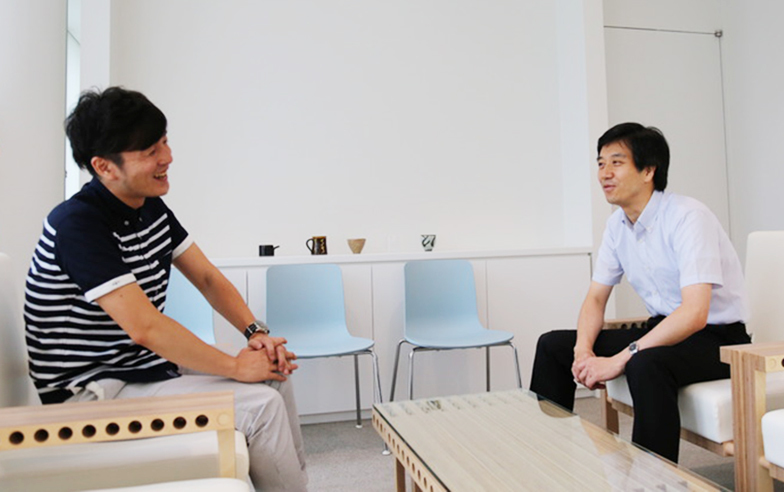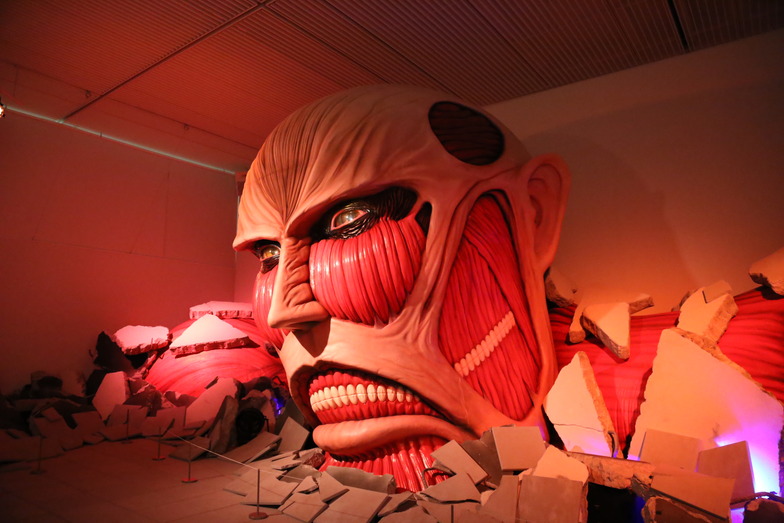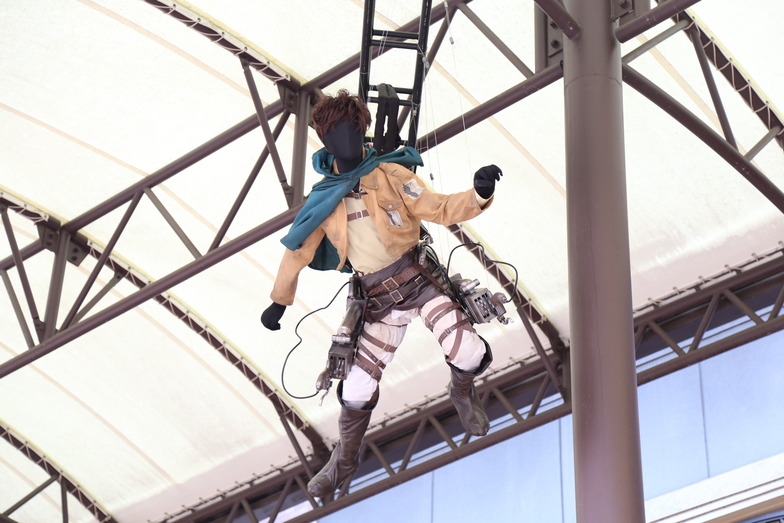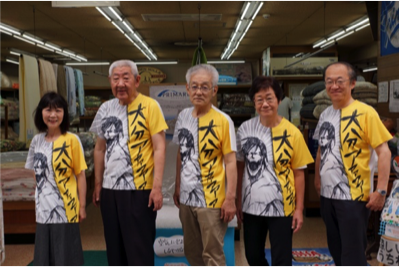The " Attack on Titan Exhibition WALL OITA " held at the Oita Prefectural Museum of Art in Oita City (August 1-30. Organized by the "Attack on Titan Exhibition" Oita Executive Committee <Oita Prefectural Museum of Art, TOS TV Oita>).
Characters like the Titans and Survey Corps members burst out of the museum and "advanced" into the city's shopping district. This project, centered around the exhibition, successfully developed regional branding and achieved significant results in revitalizing the city.
We spoke with Tadashi Shimada, Head of Planning and Public Relations at the museum, and Ryo Miura of Dentsu Kyushu Inc., who handled production, about the background behind this major movement, its success factors, and the positive response.

(From left) Ryo Miura, Tadashi Shimada
Under the banner of the "Giants," the region and shopping district united as one
──What prompted the "Attack on Titan Exhibition"?
Shimada: Our museum opened this April, but plans for a manga exhibition emerged about three years ago. The popular manga "Attack on Titan" is a highly influential work, and its creator, Hajime Isayama, is from Oita Prefecture. We strongly wanted to host it locally. Furthermore, positioning it as part of TOS TV Oita's 45th anniversary project provided significant momentum for its realization.

A 5-meter-tall, life-sized Titan with immense presence (Oita Prefectural Museum of Art) © Hajime Isayama, Kodansha / "Attack on Titan Exhibition" Production Committee
──It became a major event involving the city's shopping district, didn't it?
Miura: The museum opened around the same time as the new station building at JR Oita Station. There was a real momentum to boost the area together with the shopping streets around the museum. We'd had small ideas before, but they never quite came together. Then this major content arrived. Everyone united under the big banner of the "Giants." We decided to turn the area from the station to the museum into a "Giant Festival." This was groundbreaking and I believe it greatly contributed to revitalizing the city.

The Survey Corps "Flying" Through the Shopping District
Shimada: Honestly, Attack on Titan is a bit of a unique content, so there were concerns. But it wasn't just manga fans; the whole town, across generations, truly entered festival mode. Visitor numbers far exceeded expectations.
Building on this success, we plan further initiatives for regional revitalization.
──What stood out to you during this whole-town effort?
Shimada: We created a space called Wall Machinaka in the shopping district where people could freely write messages. Messages were left there from all over Kyushu, as well as Chugoku, Shikoku, and even Tokyo, Osaka, and as far as Aomori. I think local residents also felt the heightened attention and realized that the town can come alive depending on the initiative.

Wall Machinaka is covered with messages from fans

Shopping district residents wearing Attack on Titan T-shirts to boost the festival mood
Miura: At the information center, they did a great job introducing tourists to walking routes that take them to photo spots scattered throughout the shopping district, effectively guiding them around. Everyone in the town was highly motivated.
──From the perspective of regional branding for Oita, what are your thoughts?
Shimada: When people think of Oita tourism, the typical image is hot springs like Beppu and Yufuin. I believe we succeeded in making people, especially the younger generation, feel that "Oita's city streets are also interesting."
Additionally, the prefecture is focusing on art. In Oita City, we're holding the "Oita Toilet Art Festival" (until September 23rd), featuring art installations like a park toilet designed to look like a cake. Holding the Attack on Titan exhibition during the same period also made a strong impact, reinforcing Oita's image as an art-focused prefecture.
Miura: The success of this project, involving both public and private sectors, has become a major asset. We'll seize this opportunity to continue regional branding through diverse initiatives.
Shimada: The first three months after opening featured traditional art exhibitions, followed by the "Giants" project. This wide range of programming heightened expectations for the museum. We aim to continue energizing Oita with projects that exceed expectations.










